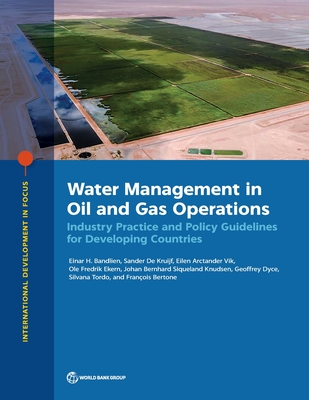Water Management in Oil and Gas Operations: Industry Practice and Policy Guidelines for Developing Countries

Water Management in Oil and Gas Operations: Industry Practice and Policy Guidelines for Developing Countries
This report discusses the challenges and opportunities associated with the freshwater needs in oil and gas operations and the beneficial use of produced water. Practical solutions are offered to support evidence-based policy making for an integrated and sustainable approach to water management.
Steadily increasing demand for water poses a threat to sustainable development, and an increasing number of regions are chronically short of water. Putting caps on water consumption, increasing water use efficiencies, and supporting improved sharing of water resources are now critical to reducing the perils posed by water scarcity to biodiversity and human welfare. Although freshwater demand in oil and gas operations is a small fraction of global water demand, oil and gas fields are commonly clustered in smaller areas, where their operations often dominate freshwater
abstraction and wastewater discharge. At the same time, oil production generates large amounts of produced water that may be used to reduce freshwater abstraction and possibly serve beneficial purposes outside the petroleum sector.
In the most advanced countries, regulation promotes the sound use of freshwater in the oil and gas industry and incentivizes the reuse or beneficial use of treated produced water. Regulation is also used to prevent the contamination of freshwater resources from the disposal of unproperly
treated produced water. In many developing and emerging economies, however, regulation to prevent water contamination is often lacking or nonexistent or, when present, is poorly enforced.
Optimal policy and regulation of the use of freshwater and the reuse of water generated by oil and gas operations depend on a range of geographic, geological, technical, and economic factors. Water Management in Oil and Gas Operations: Industry Practice and Policy Guidelines for Developing Countries identifies common policy principles organized around key regulatory functions and critical links of the oil and gas value chain. This report offers practical solutions to guide policy makers and regulators seeking to minimize the environmental impacts of oil and gas perations,
to promote sustainable cross-sectoral economic linkages, and to reduce competition and potential confl icts over access to and use of water resources.
PRP: 466.29 Lei
Acesta este Pretul Recomandat de Producator. Pretul de vanzare al produsului este afisat mai jos.
419.66Lei
419.66Lei
466.29 LeiLivrare in 2-4 saptamani
Descrierea produsului
This report discusses the challenges and opportunities associated with the freshwater needs in oil and gas operations and the beneficial use of produced water. Practical solutions are offered to support evidence-based policy making for an integrated and sustainable approach to water management.
Steadily increasing demand for water poses a threat to sustainable development, and an increasing number of regions are chronically short of water. Putting caps on water consumption, increasing water use efficiencies, and supporting improved sharing of water resources are now critical to reducing the perils posed by water scarcity to biodiversity and human welfare. Although freshwater demand in oil and gas operations is a small fraction of global water demand, oil and gas fields are commonly clustered in smaller areas, where their operations often dominate freshwater
abstraction and wastewater discharge. At the same time, oil production generates large amounts of produced water that may be used to reduce freshwater abstraction and possibly serve beneficial purposes outside the petroleum sector.
In the most advanced countries, regulation promotes the sound use of freshwater in the oil and gas industry and incentivizes the reuse or beneficial use of treated produced water. Regulation is also used to prevent the contamination of freshwater resources from the disposal of unproperly
treated produced water. In many developing and emerging economies, however, regulation to prevent water contamination is often lacking or nonexistent or, when present, is poorly enforced.
Optimal policy and regulation of the use of freshwater and the reuse of water generated by oil and gas operations depend on a range of geographic, geological, technical, and economic factors. Water Management in Oil and Gas Operations: Industry Practice and Policy Guidelines for Developing Countries identifies common policy principles organized around key regulatory functions and critical links of the oil and gas value chain. This report offers practical solutions to guide policy makers and regulators seeking to minimize the environmental impacts of oil and gas perations,
to promote sustainable cross-sectoral economic linkages, and to reduce competition and potential confl icts over access to and use of water resources.
Detaliile produsului









